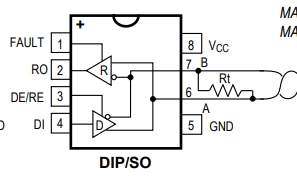Hi
I am looking for a second source part for MAX3440EESA+ RS-485 transceiver. I searched using "Cross-reference" search in TI website. THVD2410DR is listed as the alternate part and that is it a pin for pin replacement. But, the pin-out doesn't seem to match. Please find attached pinout of MAX3440EESA+. It is different from that of THVD2410DR . Can you please clarify.

Best Regards
Datta

